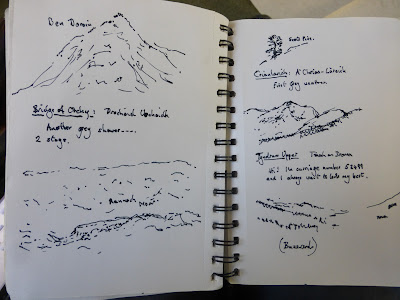At the end of the summer I was asked to write a short article for our church magazine about water. This is not, as I say in it, in any way an academic paper, and all the statistics in it can be easily found on-line, if you have time to look. But I do think that these points are worth sharing more widely, so here they are.
Water is one main theme for St John’s during 2017. Water is
our principal focus during Creationtide. So the Editor has asked me to write an
article on the subject. I am not going to attempt anything lyrical or
passionate on the subject. This has often been done by others, much better than
I could do. Instead here are various facts. This is not a scientific paper, nor
am I an expert, but as far as I can find out, these facts are accurate. I hope
they will provide a stimulus for thought, a stimulus for prayer, a stimulus for
conversation, and a stimulus for action.
The human body is about 60% water. The bones lower the
average, of course. The brain and the heart are well over 70% water.
The dreadful floods in Texas and neighbouring states, caused
by Storm Harvey have been fully reported. At the time of writing (August 31st)
33 people have been killed and about 100,000 homes have been affected. Also
during August there has been severe flooding in India, Bangladesh and Nepal.
These floods have killed about 1,200 people and left millions homeless. Many
have been killed in mudslides. Niger is affected by severe flooding every rainy
season. This summer has been no exception. Between 40 and 50 people are
reported killed and thousands have been made homeless.
Our planet is as likely to be affected by drought. That
strange phenomenon El Nino has made drought conditions worse than usual in many
parts of the world in the last couple of years. The countries of Southern and
Eastern Africa have been worst affected. In an article for the “Guardian” in
March Lucy Lamble reported: “More than 20 million people in four countries are
at risk of starvation according to the UN, making this the biggest crisis
facing the world since 1945.” Oxfam describes the drought in Eastern Kenya and
Southern Somalia as the worst in living memory. USAID, the US Government’s
agency in this field, reckons that food insecurity caused by El Nino will
continue in Lesotho, Madagascar, Malawi, Mozambique, Swaziland and Zimbabwe
till some time in 2018. Prosperous countries are, of course, better able to
mitigate the effects of drought, but climate knows no frontiers. Parts of the
state of Montana are experiencing exceptional drought as I write.
The relationship between drought and migration is extremely
complex and is the subject right now of much academic study and debate. It
would be inappropriate for me to pronounce definitively on the subject in an
article such as this. Suffice it to say that there clearly is a connection. In
September 2015 “Time” magazine carried an article headed: “How climate change
is behind the surge of migrants to Europe.” According to the UNHCR there are
some 65.6 million displaced people around the world. The number drowned trying
to cross the Mediterranean Sea in the first half of this year was over 2,000.
The pollution of water is a vast subject on its own. According
to the National Academy of Sciences 1.8 million people die every year from
diarrheal diseases such as cholera. Tens of millions of others are seriously
sickened by water-related ailments. Meanwhile at sea there is the problem of plastic
pollution. Sir David Attenborough summed up the situation:
“There is no away- because plastic is so permanent and
so indestructible. When you cast it into the ocean it does not go away.” An
article in the July edition of “National Geographic” tells how the area of
severe plastic pollution in the Pacific covers roughly one million square
miles. This is not just the notorious “garbage patch” of highly visible plastic
waste. Even more alarming are the microplastic particles that may be so small
as to be unnoticed and do not necessarily float. The creatures that live in the
sea inevitably eat them; we do not yet know what consequences will follow.
I am sorry that I cannot write a more cheerful article
on this subject. But I guess if everyone who reads this article does a little,
well it will add up to a little more.


























































